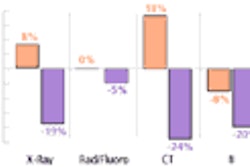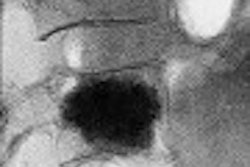Uterine Fibroids: Embolization and Other Treatments by Togas Tulandi, ed.
Cambridge University Press, New York, 2003, $95
The introduction and increasing popularity of uterine fibroid embolization (UFE) requires greater understanding by radiologists of such diseases as uterine leiomyomata. Advancements in MR, as well as the improved resolution of CT and ultrasound, have provided greater insight into the characterization and extent of this disease.
While there are several resources available to the ob/gyn that cover pathophysiology, UFE, and other treatment options, little has been geared to the radiologist, prior to this text.
Uterine Fibroids: Embolization and Other Treatments offers a brief, yet thorough, review of the history and epidemiology of uterine leiomyomas. The clinical presentation, risk factors, and histopathology are presented at levels suitable to the interests of imaging professionals.
The role of imaging in the initial evaluation; imaging findings pertinent to patient selection for treatment; and monitoring response to treatment are reviewed in detail. Excellent, well-annotated images are offered from multiple modalities. Differential diagnoses are provided. This is one of the most detailed portions of the text.
This book truly proves its merit in the chapters dedicated to UFE. It begins with a review of the surgical and medical options available, as presented by the appropriate specialist. Ample information is given to prepare for thorough discussion with a patient. Each chapter finishes with a review of potential complications that the radiologist should be aware of when evaluating post-operative images.
Subsequent chapters offer a near comprehensive discussion of the work-up, inclusion and exclusion criteria, as well as expected outcomes and pre- and post-operative management of the patient. Anatomy, techniques, catheters, and embolization agents used for UFE also are discussed. While not intended as a how-to, UFE technique is covered in sufficient detail for a solid understanding of a typical case.
The collaborative format of this text is its only shortcoming. Some chapters provide adequate discussion of the topics, while others are less focused, depending on the writing style of the contributor.
The practicing radiologist, general and interventional, will benefit from this comprehensive yet concise review.
By Dr. Daniel ReidmanAuntMinnie.com contributing writer
February 3, 2004
Dr. Reidman is a radiology resident at the Madigan Army Medical Center in Tacoma, WA.
The opinions or assertions contained herein are the private views of the author and are not to be construed as official or as reflecting the views of the Department of Defense.
The opinions expressed in this review are those of the author, and do not necessarily reflect the views of AuntMinnie.com.
Copyright © 2004 AuntMinnie.com



















